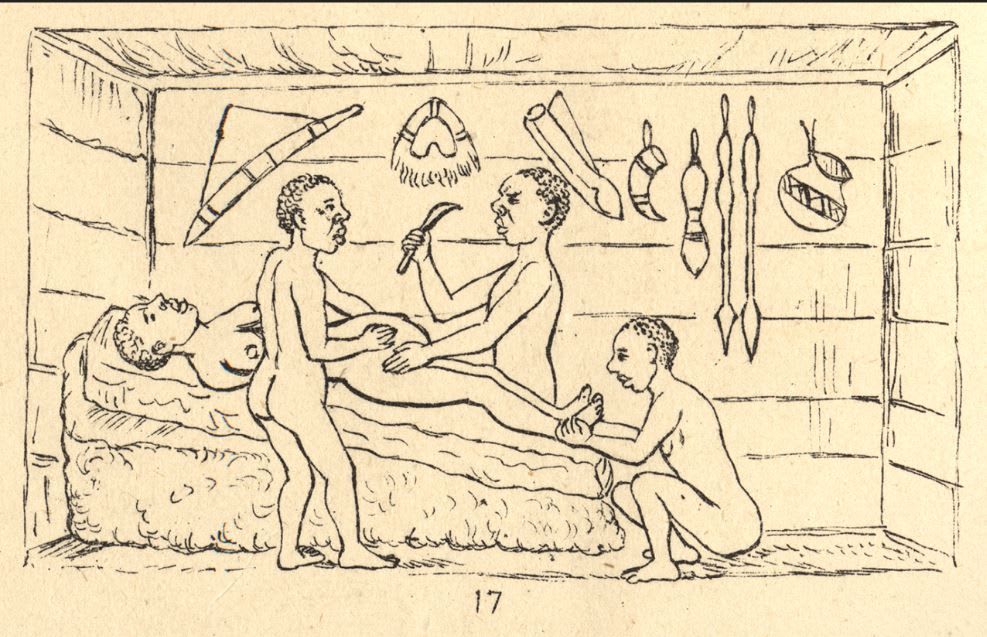Most people do not know that in ancient times, when Caesarean sections were considered dangerous in Europe, they were in fact routinely and effectively carried out by surgeons in pre-colonial Uganda. According to ancient documentation, these operations also had a significantly high success rate; both mother and child survived.
The Caesarean Section operation has been a part of human culture since ancient times and there are tales in both Western and non-Western cultures of this procedure resulting in live mothers and offspring. A Caesarean section is an important intervention in complicated births when the safety of the mother or baby is compromised. According to Greek mythology, Apollo removed Asclepius, founder of the famous cult of medicine, from his mother’s abdomen. Numerous references of Caesarean section appear in ancient Hindu, Egyptian, Grecian, Roman and other European folklore.
Historically, in Europe, when a C-section was performed on a woman, it usually resulted in the death of the mother. It was considered an extremely delicate operation, that was often only performed when the mother was dead and considered to be beyond help. It was essentially usually a last resort. The first recorded successful Caesarean in the British Empire was sometime between 1815 and 1821 – it was around this time that women were first allowed to carry out the operations, as they were largely denied access to medical schools before then.
Be this as it was, in the Kingdom of Bunyoro-Kitara in Uganda, c-section operations were routine. In 1879, British medical student Robert W. Felkin, who had embarked on a mission led by the Church Missionary Society to Central Africa, witnessed a c-section in the Kingdom Bunyoro-Kitara. He found that in the Kingdom, this was a routine procedure with a very high success rate. There, the native healer used banana wine to cleanse his hands and the woman’s abdomen before the surgery. The operation was performed more than 100 years ago before the advent of hospitals there.
The healer used a midline incision and applied cautery to minimize hemorrhaging. He would then massage the uterus to make it contract, but did not suture it, the abdominal wound was pinned with iron needles and dressed with a paste prepared from reeds. According to Felkin, “The whole conduct of the operation suggested a skilled, long-practiced surgical team at work, conducting a well-trained and familiar operation with smooth efficiency.”
According to Mastura Wamara, a former nurse in Uganda, “In those days, the Bunyoro of western Uganda fed pregnant women intensively in preparation for childbirth. Women in the community used to cook ground soup, beans and millet bread. They also used to steam sweet potatoes, cassava, green bananas and dark green vegetables. Mothers ate these before and after conception to reduce pregnancy related complications like anemia and malnutrition.”
According to documented reports by Felkin, “… the patient was intoxicated with banana wine. The surgeon made a quick cut upwards from just about the pubis to below the umbilicus, severing the whole abdomen wall and uterus so that the amniotic fluid escaped. Bleeding walls were torched with red hot irons. The surgeon completed the uterine incision, with the assistant holding up the sides of the abdomen wall with his hands and hooking two fingers into the uterus. The child was removed, the cord cut and the child handed to an assistant…”
Robert’s account of the procedure further states that until the pins were placed in position, the patient would utter no cry and then an hour after the operation, the patient seemed to be quite comfortable. The child was placed on the mother’s breast two hours after the procedure and the wound was dressed on the third morning. One pin was also removed, while three more were removed on the fifth day and the remaining on the sixth day.
Felkin’s account was received with shock and skepticism in Europe, owing to the fact that at the time, the procedure was too complicated for most surgeons and therefore had very low success rates.
Leave a Comment
Sign in or become a Africa Rebirth member to join the conversation.
Just enter your email below to get a log in link.


Related News
The Rise and Fall of the Ancient Kongo Kingdom
Nov 20, 2023
The Real Reason Why Africa Was Called the Dark Continent
Oct 31, 2023
The Rise and Fall of the Ancient Asante Empire
Oct 29, 2023